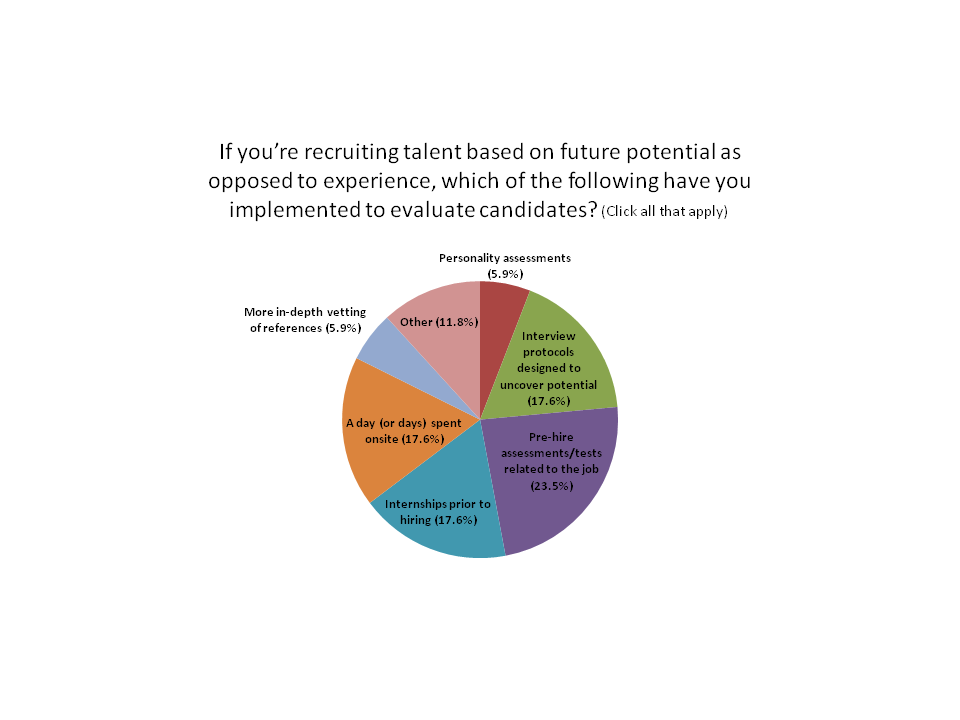Methods, Tools and Tactics Businesses Are Using to Hire For Future Potential
As the year comes to a close, so does our latest cycle of polls which focuses on topical recruitment issues and solutions. In our first poll (link here for the complete summary), we asked, “What’s your greatest recruitment challenge?” By a significant margin, 40% of respondents cited “too few qualified candidates” as their top challenge, followed by “recruiting inefficiencies” (14%) and “retention” (11%). Given that the unemployment rate at that time was at 4.3%, the results were not all that surprising.
That’s why, in the following poll, we decided to investigate how businesses were responding to the challenges of the shrinking talent pool. So, we focused on the actions companies were taking to become more effective in finding qualified candidates. Results showed a tie between “hiring people with potential, as opposed to credentials” and “enhancing our employment brand”, each selected by 18.5% of respondents. “Poaching talent directly from competitors”, was selected by 15% of poll participants. (For the complete results, go here.)
Those findings, in turn, prompted us to design our third and final poll of 2017, in which we asked about the methods businesses are using to evaluate candidates in the hiring funnel when they are hiring for future potential, as opposed to experience. The results show that pre-hire assessments are being relied upon the most, followed by interview protocols designed to uncover potential, internships and on-site visits at the business:
 In our view, all of these methods and tools are critical and valuable, especially when used in combination – such as screening for potential using tests and then, as a next step in the screening process, inviting the candidate to spend at day at the business.
In our view, all of these methods and tools are critical and valuable, especially when used in combination – such as screening for potential using tests and then, as a next step in the screening process, inviting the candidate to spend at day at the business.
On the other hand, we were somewhat surprised that none of the respondents stated that they are making changes to their online application process. This, in our view, can lead to missed opportunities where candidates with potential, but short on experience…
- …are eliminated from the recruitment process from the start, because there are gaps in their application
- …self-select out of the process in the belief that they will not be considered for the job given the gaps in their experience.
Either way, the business loses. That’s why an end-to-end assessment of the recruitment process is now, perhaps more than ever, a priority for many businesses. When businesses are clearly looking at innovative ways to solve the issue of too few qualified candidates, it’s vital to check every link in the recruitment chain, to make sure that no potentially viable candidates are missed.

